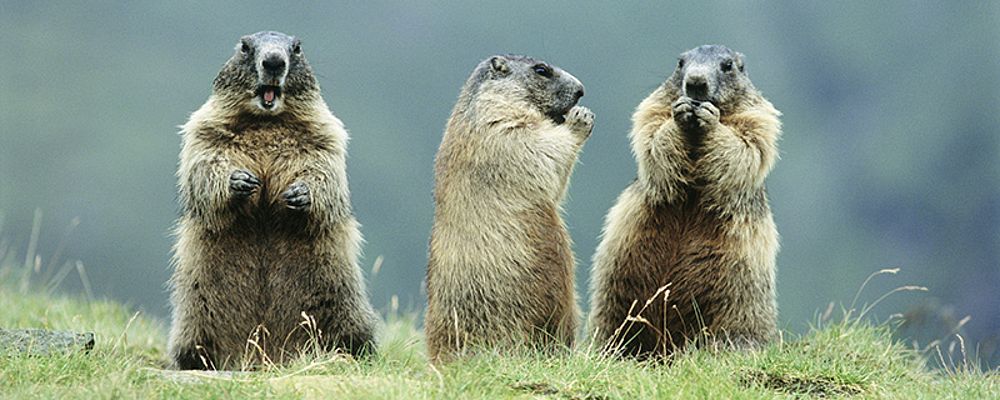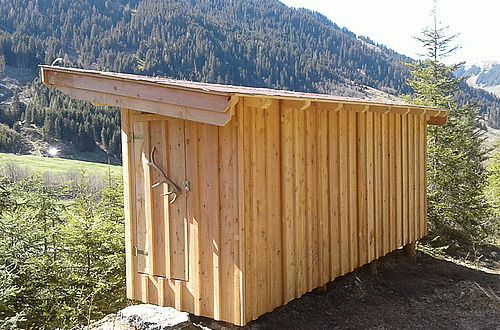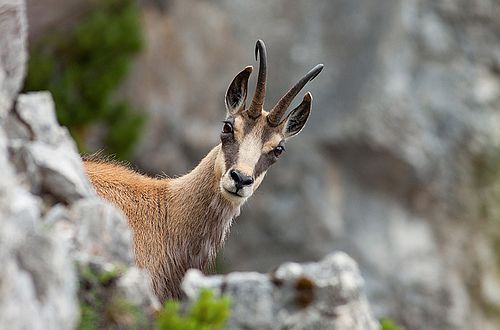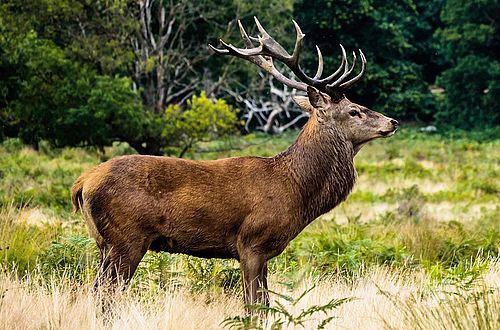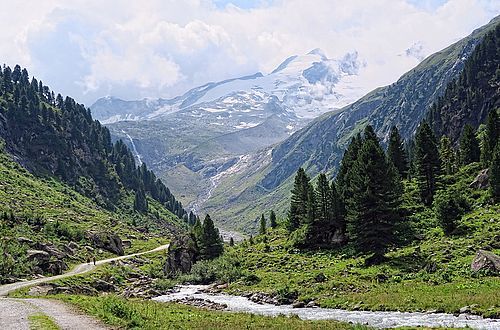OBSERVE WILDLIFE
Good Things Come to Those Who Wait
You’re invited to our VIP wildlife lounge with front row seats to the show in the Wildgerlos Valley. Our new game observation deck is a sight to behold and holds 10 comfortably inside.
The new wooden shelter is built in one of the best locations for observing high alpine wildlife. With the car, it’s only 40 minutes to the stand or an 1.5-hour hike over the Hinterplatte and Trisslalm. The view stretches across the valley to Silberkopf where red deer are feeding at the moment. The marmots on the other hand, never hang out in open spaces, preferring to stay close to their earthen dens. You can join ZillerSeason hiking guides, Judy and Jasmin, on a mountain trip to see these majestic animals in their natural habitat.
Thanks to a great wildlife diversity and density, visitors will likely see stags, red deer, marmots and chamois. Animals seek strategic locations; they just don’t hang out anywhere. It’s important to know where and when—between 5:00 and 6:00 a.m. is ideal, before it gets hot, and then again at dusk. As soon as daytime temperatures rise, animals disappear into the forest for shade. As soon as animals hear a noise or get a whiff of human, their instinct reflex sounds the alarm and they’re off and running. Of course, there is always a little luck involved, but you can view more animals at a distance with binoculars.
At the Right Place at the Right Time
It is best to move quietly through the forest and not chase after wild animals, this only scares them off. Springtime lends itself well because the animals are on the move, but May and June are sensitive birthing times when animals should not be disturbed at all. During high summer, the animals retreat into the forest. As the weather cools in autumn, the animals return to sunny, open areas. Mid-September is a great time to observe the stags in the rut when they sing their mating calls and spar with others. To view these creatures properly and respectfully, quiet patience is required. Those who position themselves wisely and wait patiently are rewarded.
Ever since the last ice age alpine marmots have made their homes close to glaciers. Saying they don’t like the heat is putting it mildly. They live together in social groups of about 20 in earthen dens, eating plants and roots. From October to April they sleep. After the brown bear became extinct from central Europe’s forests, the red deer is now the largest mammal here. The antlers of large stags have many points that form a crown, which they shed annually. The roe deer is distantly related to the red deer. When threatened, these shy creatures retreat to wooden thickets. The males have a smaller antler rack, which serves to determine and defend the ranking order within the herd. Chamois, or the goat-antelope, is a very powerful mountain climber, finding desolate areas to rest and forage in social herds on cliff sides and craggy peaks.
The Wildgerlostal hunting reserve is 2850 hectares with eight feeding stations, 120 salt licks and many tree stands and other infrastructure. There are 210-220 feeding days throughout the year. The game reserve partly borders and is located within the National Park Hohe Tauern.
Often accompanying his father who worked as a forest supervisor, Andreas Hauser’s career path was clear from a young age. After forestry school, Andreas graduated with a degree as a professional hunter. Since 2003, he is overseeing the management of the Wildgerlostal Hunting Reserve – a childhood dream come true.
